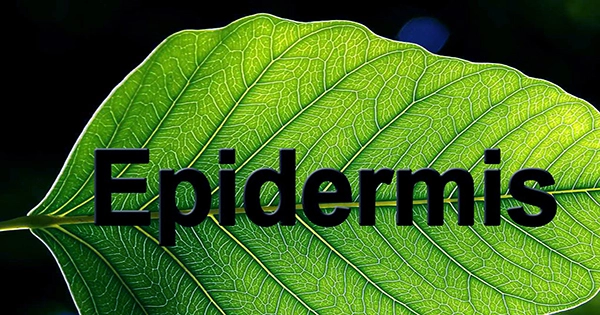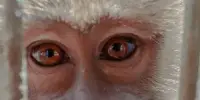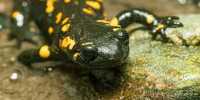Plants’ leaves, flowers, roots, and stems are all covered with the epidermis, which is a single layer of cells. Between the plant and the surrounding environment, it creates a barrier. In addition to preventing water loss, controlling gas exchange, secreting metabolic chemicals, and absorbing water and mineral nutrients, the epidermis also protects against moisture loss. Most leaves have dorsoventral anatomy visible in their epidermis; the upper and lower surfaces are constructed substantially differently and may have different purposes. The protective layer that replaces the epidermis on woody stems and some other stem structures, such as potato tubers, is a secondary covering referred known as the periderm.
Structure and Contents: The epidermis typically has one layer of cells. Ficus, Nerium, and orchid aerial roots all have multiple epidermises, which is an epidermises with numerous layers. Multiple epidermises are formed when the epidermis beginnings divide periclinal. The unique word “velamen” refers to the numerous epidermis of the orchid root.
The epidermis of a plant’s aerial portions is made up of living parenchyma cells, which can vary in size, shape, and arrangement. In cross-section, epidermal cells resemble tabular shapes more or less. The epidermal cell walls in leaves look straight or sinuous in surface view in monocots and dicots, respectively. Typically, the intercellular gaps between the cells of the epidermis are minimal or nonexistent (e.g. flower petals).

There are no chloroplasts in the epidermal cells. Chloroplastids are specialized epidermal cells found in the guard cells of stomata. The epidermal cells may also include other pigments, such as anthocyanin. In some plants, silicon may be deposited not in the wall or lumen but in the epidermal cells. Trichomes’ walls could silicify.
The form and size of a silicon-containing cell can be used to distinguish it from nearby epidermal cells. This lone cell can either be dispersed across the leaf’s surface or arranged in longitudinal rows across the veins. The leaves of Cyperus, Avena, and other plants also contain silicon, as do the bracts of rice and the marginal trichomes of oat.
The epidermal cells in the internode of Avena sativa form cork-silica cell pairs, or cork and silica-containing cells that are in intimate contact with one another. Some of the epidermal cells in the Ficus leaf have calcium carbonate crystals or cystoliths. These specialized epidermal cells holding cystolith are known as lithocysts, and their huge size easily distinguishes them from normal epidermal cells.
The walls of epidermal cells are typically thin. In some gymnosperms, the epidermal cells have thick walls and are lignified. A fatty material called cutin, which forms the cuticle over which wax may also be produced, is frequently deposited on the outside surface of the epidermal cell wall. The cuticle has a high preservation level in fossils and is resistant to deterioration.
The types and locations of hairs and stomata, which are distinguishing characteristics of epidermal surfaces, are frequently preserved by the cuticle. Cuticular investigations can therefore be used to identify fossilized plants. Palmer (1976) reconstructed the kind of former vegetation of East African lake sediments using the fossil grass cuticle as a new palaeoecological instrument rather than grass pollen.
Small plant fragments are now recognized using the cuticular pattern, which is important in forensic medicine, animal nutrition, pharmacognosy, etc. Taxonomists can utilize cuticular patterns to identify genera and species. Water cannot pass through the cuticle of grapes, however, when the grapes turn into a sultana, the water diffuses out. It serves a protective purpose. Cutin inhibits the entry of the disease and is resistant to germs.
Wax is frequently produced on the cuticle surface of plants. On leaves and a variety of fruits, including plums, grapes, and others, this develops a powdery coating. Fruits and foliage gain a glossy appearance as a result (e.g. grapes). Wax is deposited as granules, rods, or tubes, which create a variety of distinct patterns on the surface.















